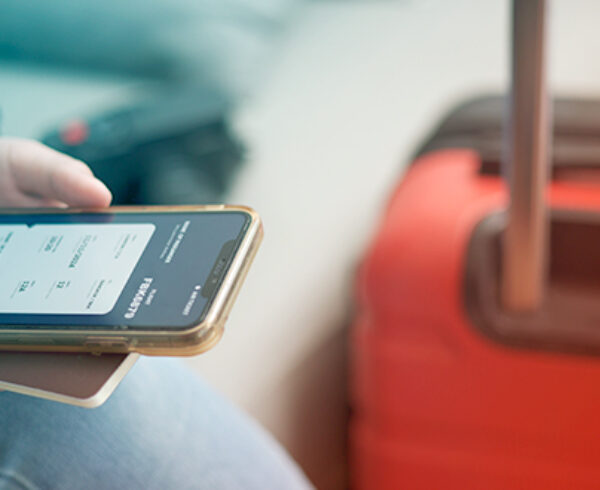As a Travel Manager, your job isn’t only to ensure your business Travelers get where they need to go. You also have to oversee and prioritize business travel cost savings.
Managing travel means juggling a lot of moving parts. As you very likely know, those moving parts go far beyond just building an itinerary or booking a flight. You also need to manage a travel program properly. You must ensure that the travel program meets both the company’s and Travelers’ needs. One of those needs — at least on the part of the former — is business travel cost savings, even if your travel budget has risen in recent years.
However, managing business travel costs and finding business travel cost savings can feel complex. It can even feel overwhelming in light of the other tasks on your plate. Where do you even get started? Unsurprisingly, the answer is at the beginning.

1. Define Your Business Travel Needs
Before you can even begin to manage your company’s business travel and find those business travel cost savings, you have to define its business travel needs accurately and comprehensively.
This includes not just thinking about Travelers’ needs but also thinking about the company’s needs. What are your budgetary constraints? How often, when and why do your teams travel? What are your historic annual travel costs? How well do those costs align with your organization’s intended travel budget? Are Travelers currently happy with their existing Business Travel Experiences? Are they able to meet the goals of each business trip based on these experiences?
As you begin to answer questions like these and clearly define both the company’s and Travelers’ needs, you likely will begin to notice gaps in your current travel management processes. You’ll start to see areas where you either need business travel cost savings or where there’s potential for business travel cost savings.

2. Set Your Business Travel Goals
Based on the defined business travel needs, you’ll be able to establish goals related to business travel cost savings.
For example, if a good portion of your company’s current business travel is crucial to operations and non-negotiable, you likely won’t be able to reduce overall business travel by that much. However, you may be able to find better business travel deals for your Travelers. You might be able to implement new booking policies and procedures or new booking tools.
Be careful, though. As you set business travel cost savings goals, don’t inadvertently prioritize savings to such a degree that other aspects of your business travel processes suffer.
For example, don’t lean so much on the budget-friendly side of business travel that you leave your Travelers with a poor Business Travel Experience that they’re reluctant to replicate. Or, don’t reduce the use of business travel tools to the degree that policy non-compliance on your Travelers’ parts becomes the easiest and preferable option.
Likewise, keep your organization’s sustainability goals in mind. While meeting sustainability goals can seem costly in some ways, sustainability initiatives have been proven to boost companies’ bottom lines. They can boost bottom lines by up to 44%, as sustainability initiatives can increase efficiency and innovation.
3. Revamp Your Travel Policies
Once you have your business travel cost savings goals set, carefully balancing savings goals with other factors such as Traveler comfort needs and sustainability goals, it’s time to revamp your travel policies. If you’ve been missing out on savings in the past, it means your existing policy isn’t working for you.
Look at your current policy and evaluate how it’s helping or hurting your newly established goals. Then, revise those policies so that they help you eventually meet your business travel cost savings goals.
As you do, make sure that all travel policies are as clear as possible. You want to encourage compliance. It’s more difficult for Travelers to comply with travel policies that are opaque or that lead to lots of questions. (However, if your Travelers have many questions, be open to prompt and clear communication.)
Make sure that your travel policy touches on such cost savings-adjacent topics as booking procedures, travel request approval procedures and reimbursements. Be sure to set up parameters around travel spending. In some cases, you may even want to incentivize Travelers to spend less. This could be through rewards systems that come with benefits such as days off or even a portion of the travel budget saved at the end of the year.

4. Don’t Be Afraid to Revisit and Revise
Even with these extra steps, you’re likely to find even more areas where you can adjust your policies and procedures to better meet business travel cost savings goals. Don’t be afraid to revisit and revise your policies in order to finetune them.
You may discover new ways to save on hotel or flight bookings. You might realize that you can be a little more flexible with some of your travel policies if it means extra savings. You might discover that a new hotel or similar brand partnership can save your Travelers extra costs in the end. It might mean fewer expenses such as Wi-Fi, meals, parking and more.
5. Determine Where and When You Might Need Help Finding Business Travel Cost Savings
In some cases, you might need a little extra travel management help to meet your business travel cost savings goals. Are there certain areas of your business travel processes that just don’t seem to work? No matter how much you communicate with Travelers or how much oversight you attempt to provide?
You may need to enlist tools or services designed to help. That’s where JTB Business Travel can come in, assisting you with travel management resources that make your job easier, that make Travelers’ experiences more enjoyable and productive, and that help you reach your travel management goals, from business travel cost savings goals to sustainability goals and beyond.
Check out our full suite of services and get in contact today to learn more.













